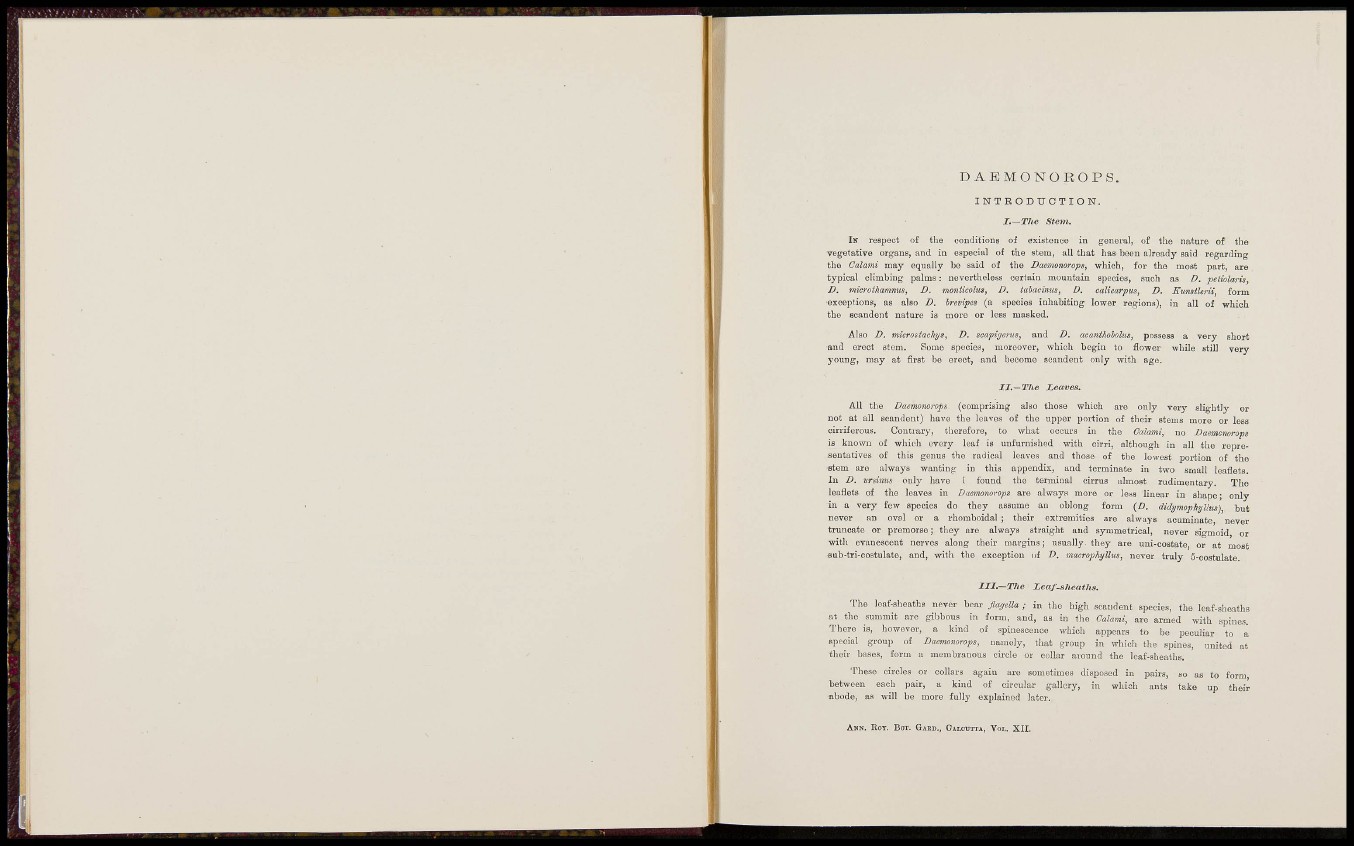
D A E M O N O R O P S .
I N T R O D U C T I O N .
I.—The Stem.
IN respect of the conditions of existence in general, of the nature of the
organs, and in especial of the stem, ail that has been already said regarding
the Calami may equally be said of the Daemonorops, which, for the most part, are
typical climbing palms: nevertheless certain mountain species, such as Z>. peiiolaris,
D. microtkamnus, D. monticolug, D. tahacinus, D. calicarpus, D. EunstUrii, form
exceptions, as also D. Irevipes (a species inhabiting lower regions), in all of which
the scandent nature ia more or less masked.
Also D. microstachys, D. saapigerus, and D. acanikololus, possess a very short
and erect stem. Some species, moreover, which begin to flower while still very
young, may at first be erect, and become scandent only with age.
IJ.—The Leaves.
All the Daemonorops (comprising also those which are only very slightly or
not at all scandent) have the leaves of the upper portion of their- stems more or less
cirriferous. Contrary, therefore, to what occurs in the Calami, no Daemcnorops
is known of which every leaf is unfurnished with cirri, although in all the rei^resentatives
of this genus the radical leaves and those of the lowest portion of the
stem are always wanting in this appendix, and terminate in two small leaflets.
In D. urdnus only have I found the terminal cirrus almost rudimentary. The
leaflets of the leaves in Daemonorops are always more or less linear in shape; only
in a very few species do they assume an oblong form (Z). didymophyllus), but
never an oval or a rhomboidal ; their extremities are always acuminate never
truncate or premorse; they are always straight and symmetrical, never sigmoid, or
witli evanescent nerves along then- margins; usually, they are uni-costate, or at most
sub-tri-costulate, and, with the exception of T). macrophyllus, never truly 5-costulate.
III.—The Lcaf-sheatJis.
The leaf-sheathe never bear Jlagella; in the high scandent species, the leaf-sheaths
at the summit are gibbous in form, and, as in the Calami, are armed with spines.
There is, however, a kind of spinescence which appears to bo peculiar to i
special group of Daemonorops, namely, that group in which the spines, united at
their bases, form a membranous circle or collar avound the leaf-sheaths.
These circles or collars again are sometimes disposed in pairs, so as to form
between each pair, a kind of circular gallery, in which ants take up their
abode, as will be more fully explained later.
ANN. ROY. BOT, GAUD., OALCTJITA, YOL. X IL